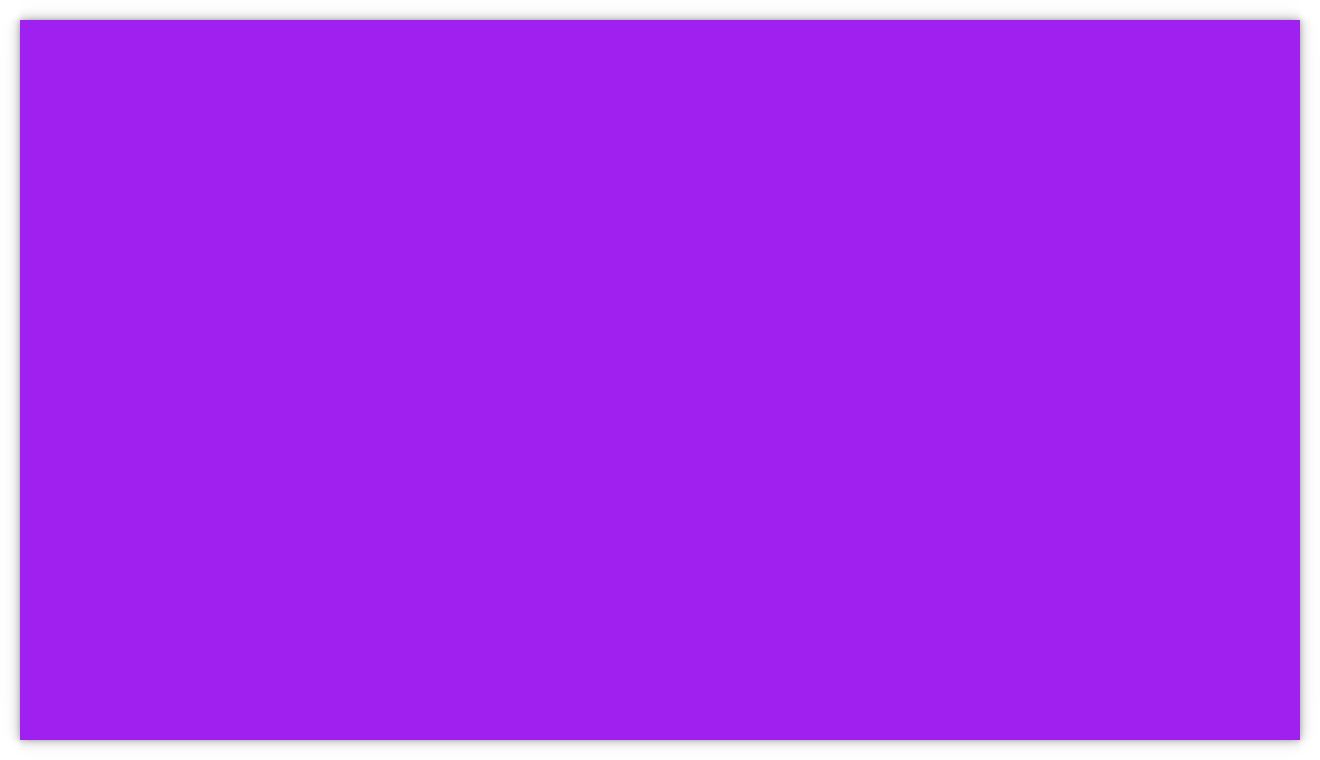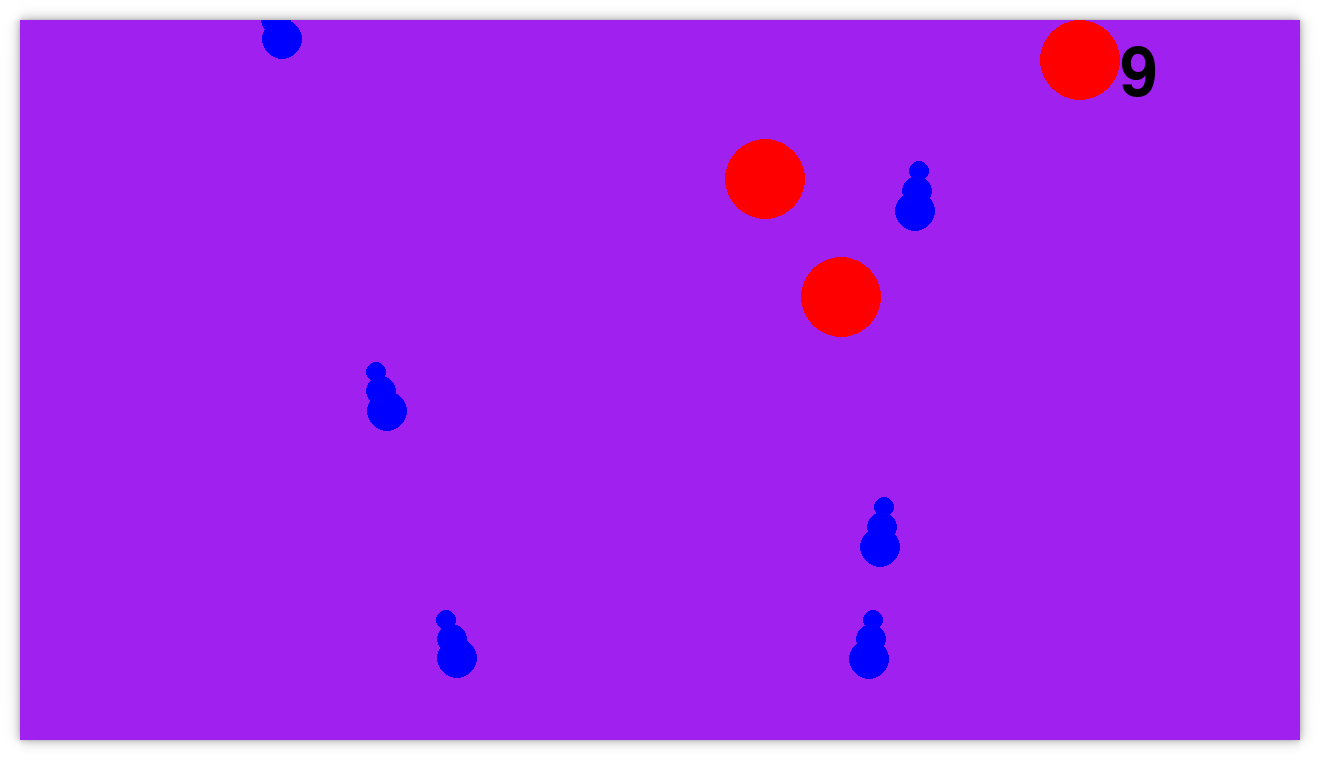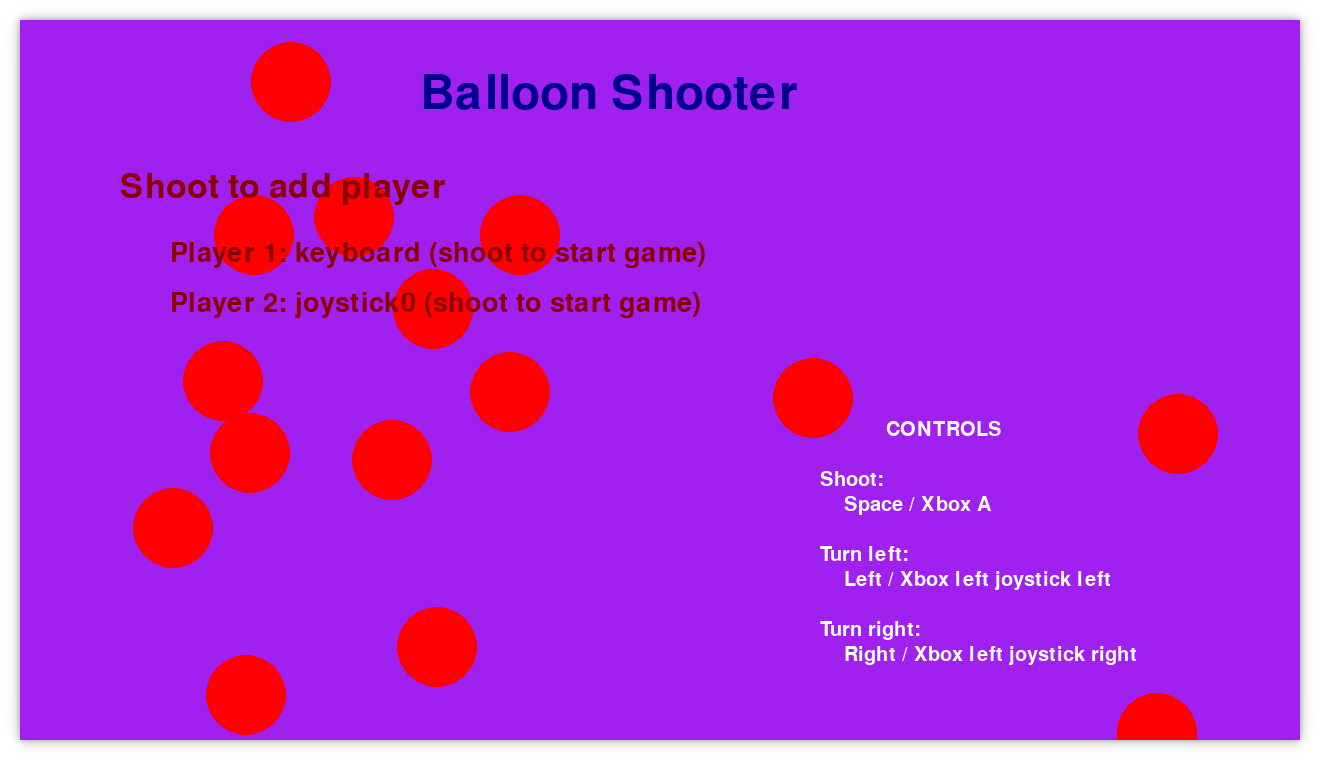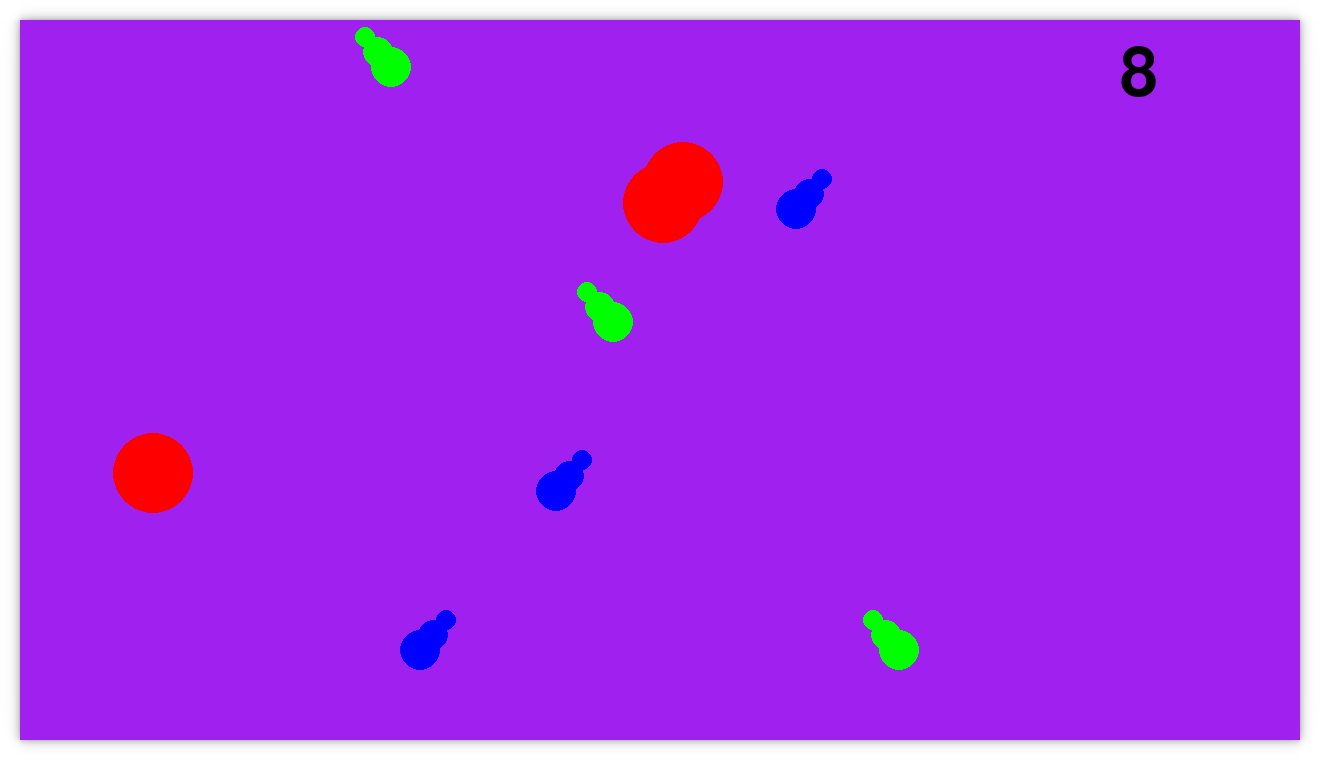Multiplayer
Published on 29 June 2023 in Agile Game Development with Python and Pygame.
For every story that we work on, the balloon shooter feels more and more like a real game. The initial goal of this project was to create a game that me and my son will enjoy playing together. At this point, I think the most valuable thing we can work on towards that goal is adding support for multiplayer. So that’s the topic for this episode.
A new layer
The entry point for the balloon shooter looks like this:
if __name__ == "__main__":
BalloonShooter.create().run()
The balloon shooter class instantiates a game scene which implements the logic of our game:
class BalloonShooter:
def __init__(self, loop):
...
self.game_scene = GameScene(Rectangle.from_size(*self.resolution))
def tick(self, dt):
self.game_scene.update(dt)
self.loop.clear_screen()
self.game_scene.draw(self.loop)
...
This means that as soon as we start the game, we enter the gameplay mode and can start playing right away.
I imagine that multiplayer mode works by first selecting which players should participate in shooting balloons, and after that, the gameplay mode is entered and each player gets their own bow to shoot with.
We want to go from this structure:
BalloonShooter
GameScene
To something like this:
BalloonShooter
NewGameScene
StartScene
GameScene
We want to add another level that first directs calls to a start scene (or player select scene) and once players are selected, initializes the game scene and directs call to that.
The current tests for GameScene should pass unchanged, but tests for BalloonShooter will need some modifications. I imagine that those tests need to select a player before asserting something from the gameplay mode. We’ll see later.
Refactor to new structure
Let’s start by slowly and carefully refactor towards this new structure, using our tests as a safety net to give us feedback about how we’re doing.
I want to call the new layer GameScene, but that name is already taken. The current game scene is really the gameplay scene, so we rename it to that. Then we create the new game scene which just forwards its calls to the gameplay scene:
class GameScene:
def __init__(self, screen_area):
self.gameplay = GameplayScene(screen_area=screen_area)
def event(self, event):
self.gameplay.event(event)
def update(self, dt):
self.gameplay.update(dt)
def draw(self, loop):
self.gameplay.draw(loop)
We insert this new layer in BalloonShooter like this:
@@ -113,7 +113,7 @@ class BalloonShooter:
def __init__(self, loop):
self.loop = loop
self.resolution = (1280, 720)
- self.game_scene = GameplayScene(Rectangle.from_size(*self.resolution))
+ self.game_scene = GameScene(screen_area=Rectangle.from_size(*self.resolution))
The new layer is now added, all tests are passing, and we have a point in our code (GameScene) where we can put functionality to choose between a start scene and a gameplay scene.
Before we can work on that behavior, we need a start scene.
Start scene
We write the initial version of the start scene like this:
class StartScene(SpriteGroup):
"""
I report players when on player has shot twice:
>>> start = StartScene(screen_area=Rectangle.from_size(500, 500))
>>> start.get_players() is None
True
>>> start.event(GameLoop.create_event_joystick_down(XBOX_A))
>>> start.update(0)
>>> start.get_players() is None
True
>>> start.event(GameLoop.create_event_joystick_down(XBOX_A))
>>> start.update(0)
>>> start.get_players()
['one']
"""
def __init__(self, screen_area):
SpriteGroup.__init__(self)
self.input_handler = InputHandler()
self.shots = 0
def event(self, event):
self.input_handler.action(event)
def update(self, dt):
SpriteGroup.update(self, dt)
self.shots += 1
def get_players(self):
if self.shots > 1:
return ["one"]
The idea is that a player (keyboard or gamepad) selects to be part of the game by shooting. When all players have entered, one of them can shoot again to start the game. This functionality is not yet fully implemented above. But this will do for now.
When writing this blog post and looking at the code, I notice two problems. First of all “on” should be “one” in the test description. Second of all, the implementation does not check events at all, so if the test does not simulate any events, it will still pass. If we were to take this start scene into play now, we just need to wait for two iterations (2/60th of a second) and it would report players ['one']. That does not seem correct.
Let’s fix that. We modify the test to do two updates and the assertions should be the same:
"""
>>> start.event(GameLoop.create_event_joystick_down(XBOX_A))
>>> start.update(0)
>>> start.update(0)
>>> start.get_players() is None
True
>>> start.event(GameLoop.create_event_joystick_down(XBOX_A))
>>> start.update(0)
>>> start.update(0)
>>> start.get_players()
['one']
"""
I wonder how common the event + update pattern is in our tests. Perhaps we can benefit from a test helper something like this:
def cycle(sprite, events=[], dt=0):
for event in events:
sprite.event(event)
sprite.update(dt)
sprite.update(dt)
We might try it in a few places and see if the tests read better. But not now. The modification to the tests forces us to check events. We do it like this:
class StartScene(SpriteGroup):
def update(self, dt):
SpriteGroup.update(self, dt)
self.input_handler.update(dt)
if self.input_handler.get_shoot():
self.shots += 1
...
With that fix out of the way, let’s work on integrating the start scene.
Take start scene into play
The game scene currently forwards all calls to the gameplay scene. To take the start scene into play, we first want the start scene to be active, and have the game scene forward calls to it. Once players have been selected, we want the game scene to switch the active scene to the gameplay scene.
We express that in the following test:
class GameScene:
"""
Initially, I draw the start scene:
>>> game = GameScene(screen_area=Rectangle.from_size(500, 500))
>>> isinstance(game.active_scene, StartScene)
True
When players have been selected, I draw the gameplay scene:
>>> game.event(GameLoop.create_event_keydown(KEY_SPACE))
>>> game.update(0)
>>> isinstance(game.active_scene, StartScene)
True
>>> game.event(GameLoop.create_event_keydown(KEY_SPACE))
>>> game.update(0)
>>> isinstance(game.active_scene, StartScene)
False
"""
This is an example of an overlapping, sociable test. To make the scene switch happen, we need StartScene.get_players to return something. Since the game scene uses the real start scene, and not a mock, the only way to make it return something is to perform the same actions as we did in the start scene tests.
To make this test pass, we initialize an active scene variable to the start scene and switch it to the gameplay scene once we have selected players:
class GameScene:
def __init__(self, screen_area):
self.screen_area = screen_area
self.active_scene = StartScene(screen_area=self.screen_area)
def update(self, dt):
self.active_scene.update(dt)
if isinstance(self.active_scene, StartScene):
if self.active_scene.get_players():
self.active_scene = GameplayScene(screen_area=self.screen_area)
...
The test talks about switching to a gameplay scene, but it only asserts that the start scene is not active anymore. We could probably clarify that.
I’m also not sure how I feel about the assertions that checks the type of the active scene. But I don’t have any ideas for a better way to express that. If you do, please let me know.
When we run the game now, it shows a blank purple screen. If we shoot twice we enter the gameplay scene and the game starts as before. Perfect!
We do not yet take players into account and we can still not have multiple players. What we do have is a skeleton with a few more places where this new functionality can be added.
The game works fine now (if we know that we have to shoot twice to get passed the start scene), but a test fails. It is the test for the balloon shooter. Here it is:
class BalloonShooter:
"""
We run the game for a few frames, then quit:
>>> events = BalloonShooter.run_in_test_mode(
... events=[
... [],
... [],
... [],
... [],
... [],
... [],
... [GameLoop.create_event_user_closed_window()],
... ]
... )
The game loop is initialized and cleaned up:
>>> events.filter("GAMELOOP_INIT", "GAMELOOP_QUIT")
GAMELOOP_INIT =>
resolution: (1280, 720)
fps: 60
GAMELOOP_QUIT =>
...
"""
This test is at the outermost level, so it includes all objects. Before, the gameplay scene received the events from the test, but now the start scene receives them. The start scene does not handle the user closed window event which results in this test just hanging.
That failure teaches us that we can’t quit the application when we are in the start scene, only when we are in the gameplay scene. That is probably not correct. Thank you test for pointing that out. However, the assertions that follow check for example that a balloon is drawn, so the test expects to be in the gameplay mode. We modify the test to include two shoot events so that we end up in the gameplay scene:
"""
>>> events = BalloonShooter.run_in_test_mode(
... events=[
... [GameLoop.create_event_keydown(KEY_SPACE)],
... [GameLoop.create_event_keydown(KEY_SPACE)],
... [],
... [],
... [],
... [],
... [],
... [],
... [GameLoop.create_event_user_closed_window()],
... ]
... )
"""
And, we are back to green!
Here is yet another example of overlapping, sociable testing. We yet again have to simulate two shoot events to select players.
One downside of this approach is that if we were to change the logic for selecting players, say that we first need to shoot and then turn left, then we would have to modify three test I think. One way to make that less of a problem in this particular situation is to create a test helper something like this:
def events_to_select_one_player():
return [
GameLoop.create_event_keydown(KEY_SPACE),
GameLoop.create_event_keydown(KEY_SPACE),
]
We could use that test helper in all tests (with some modification) and now there is only one place in the tests that knows about what events that gets us from the start scene to the gameplay scene with one player.
Pass players to game scene
Our skeleton for the new feature is not quite complete. The gameplay scene does not know about players. Let’s fix that by passing the players from the start scene to the gameplay scene like this:
@@ -162,7 +162,10 @@ class GameScene:
self.active_scene.update(dt)
if isinstance(self.active_scene, StartScene):
if self.active_scene.get_players():
- self.active_scene = GameplayScene(screen_area=self.screen_area)
+ self.active_scene = GameplayScene(
+ screen_area=self.screen_area,
+ players=self.active_scene.get_players()
+ )
To make this work we also add that argument to the constructor of the gameplay scene:
@@ -333,11 +336,13 @@ class GameplayScene(SpriteGroup):
[]
"""
- def __init__(self, screen_area, balloons=[], arrows=[]):
+ def __init__(self, screen_area, balloons=[], arrows=[], players=["default"]):
Now, I think our skeleton is complete. What do I mean by that? I mean that all the pieces are connected they way we think they should be. Now we can work individually on the start scene and the gameplay scene. The start scene needs to be able to select multiple players and should return those players in the list. The gameplay scene should take players into account and create one bow per player that it can control.
Make input handler player aware
The start scene uses the input handler’s get_shoot to detect shots:
class StartScene(SpriteGroup):
...
def update(self, dt):
SpriteGroup.update(self, dt)
self.input_handler.update(dt)
if self.input_handler.get_shoot():
self.shots += 1
However, to select multiple players, the start scene must know who shot. Let’s modify the input handler to support that. We write this test:
"""
>>> i = InputHandler()
>>> i.update(0)
>>> i.get_shots()
[]
>>> i.event(GameLoop.create_event_keydown(KEY_SPACE))
>>> i.event(GameLoop.create_event_joystick_down(XBOX_A, instance_id=7))
>>> i.update(0)
>>> i.get_shots()
['keyboard', 'joystick7']
>>> i.update(0)
>>> i.get_shots()
[]
"""
We create a new get_shots method that returns a list of player/input identifiers. If the shot is triggered by the keyboard, the player identifier is keyboard. If the shot is triggered by a gamepad, the player identifier is joystick plus the unique id of that joystick. We implement it like this:
class InputHandler:
def __init__(self):
self.shots_triggered = []
...
def event(self, event):
if event.is_keydown(KEY_SPACE):
self.shots_triggered.append("keyboard")
elif event.is_joystick_down(XBOX_A):
self.shots_triggered.append(self.joystick_id(event))
...
def joystick_id(self, event):
return f"joystick{event.get_instance_id()}"
def update(self, dt):
self.shots = self.shots_triggered
self.shots_triggered = []
...
def get_shots(self):
return self.shots
...
Start scene returns players
Now, let’s see if we can make StartScene.get_players to return actual player identifiers instead of hard coded ['one']. As usual, we start with a test:
"""
>>> start = StartScene(screen_area=Rectangle.from_size(500, 500))
>>> start.get_players() is None
True
>>> start.event(GameLoop.create_event_joystick_down(XBOX_A, instance_id=7))
>>> start.event(GameLoop.create_event_joystick_down(XBOX_A, instance_id=7))
>>> start.update(0)
>>> start.get_players()
['joystick7']
"""
We make the test pass like this:
class StartScene(SpriteGroup):
def __init__(self, screen_area):
...
self.pending_players = []
self.players = None
def update(self, dt):
...
for player in self.input_handler.get_shots():
if player in self.pending_players:
self.players = self.pending_players
else:
self.pending_players.append(player)
def get_players(self):
return self.players
...
Multiple bows in game scene
At this point, the start scene returns a correct list of players selected and the only piece missing is for the gameplay scene to create multiple bows and direct events to the correct bow.
Instead of having just a single bow, we create multiple bows like this:
- self.bow = self.add(Bow())
+ self.bows = {}
+ bow_position = self.screen_area.bottomleft.move(dy=-120)
+ bow_increment = self.screen_area.width / (len(players)+1)
+ for player in players:
+ bow_position = bow_position.move(dx=bow_increment)
+ self.bows[player] = self.add(Bow(position=bow_position))
Then we forward events to the correct bow like this:
- if self.input_handler.get_shoot():
- self.flying_arrows.add(self.bow.shoot())
- self.bow.turn(self.input_handler.get_turn_angle())
+ for player in self.input_handler.get_shots():
+ self.flying_arrows.add(self.bow_for_player(player).shoot())
+ for player, turn_angle in self.input_handler.get_turn_angles().items():
+ self.bow_for_player(player).turn(turn_angle)
Here we use InputHandler.get_turn_angles to get turn angles per player. It is implemented similarly to how we implemented InputHandler.get_shots.
To get the correct bow, we use this:
def bow_for_player(self, player):
for input_id, bow in self.bows.items():
if input_id == player:
return bow
return bow
If no player is found, the last bow is returned. So if you attach another gamepad after the gameplay mode has entered, it will control the last bow. Not sure if that is right. We’ll have to ask our product owner.
We didn’t write any tests for this new behavior. We do have tests that check that a single player can shoot and turn. That gives us confidence that the new for loops work. There could be an error in bow_for_player so that an input event controls the wrong bow. The tests would not catch that. But I find that unlikely, and I’m not worried about it happening.
End result
If we start the game now, we are greeted, again, with a blank purple screen:

If we shoot once with the keyboard, then twice with the gamepad, we are taken to this scene where the keyboard and the gamepad can control their own bow:

And we have the first version of a working multiplayer mode!
Polishing
An empty start scene does not feel polished. Let’s add some instructions to inform players how to get passed it. It mostly involves doing loop.draw_text in the draw method. Not very interesting. However, let’s also add some animated balloons in the background to make the scene a little more interesting. Thanks to the extraction of Balloons that we did in the previous episode, we can do this with the following lines:
class StartScene(SpriteGroup):
def __init__(self, screen_area):
SpriteGroup.__init__(self)
positions = [
Point(
x=screen_area.get_random_x(),
y=random.randint(screen_area.topleft.y, screen_area.bottomright.y)
)
for x in range(15)
]
self.add(Balloons(
positions=positions,
number_of_balloons=len(positions),
screen_area=screen_area
))
...
...
I really should have created screen_area.get_random_x() or even screen_area.get_random_position(). But I got carried away and wanted a result quickly. We add a note about that and might address it in a future refactoring.
Anyway, here is the final result of the start scene:

Here we have selected two players: one with the keyboard and one with a gamepad. If any of them shoot again, we enter the gameplay mode, or we can continue to add players by shooting with a different gamepad.
As a final polish we will make different players have different colors. The result:

A reflection on stories
How many stories have we worked on in this episode?
Well, we have added support for multiplayer, isn’t that just one story?
But we also did some polishing. Polishing could easily be its own story. Polish adds value to the players of the game.
So the stories might be
- Add multiplayer support
- Nicer looking, more informative start scene
- Different player colors
The first one is a lot bigger than the others. Is it possible to split it so that all stories that we work on have roughly the same size? I’m not sure. Let’s think about it.
Let’s think about the state that the game was in when we had a start scene but the players could not be selected. We had visible change in behavior. There was now a start scene that wasn’t there before. But had we added value? Players expecting multiplayer would be disappointed. Other players would have to shoot a couple of times extra before they can play the game. That doesn’t seem like value. However, players could see this new start scene and ask questions like “what is this?” and “what am I supposed to do here?” We can tell them our idea and they can give us feedback if we are on the right track. Perhaps they want to start a multiplayer session in a different way? Perhaps they think a descriptive text on the start scene is more important? That feedback has value.
So we could at least split the first story into two:
- Player selection start scene
- One bow per player
As long as we can show visible progress, I think the story has value.
Summary
With the new start scene and multiplayer mode, the balloon shooter feels even more like a real game. I find myself wanting to go play the game and enjoy what we have created. That is a really nice feeling.
I am a bit surprised what you can achieve with the only graphics primitives being circles and text. I mean, the look of the game is pretty bad, the colors are horrible, and yet the idea comes across nicely and game mechanics can be felt anyway. I wonder how much of an improvement it would be to improve graphics. Probably a lot. But I am still surprised how far circles and text have taken us.
See you in the next episode!
Site proudly generated by Hakyll.